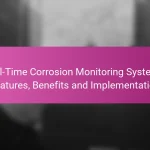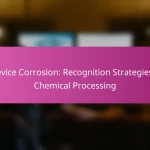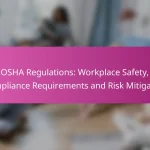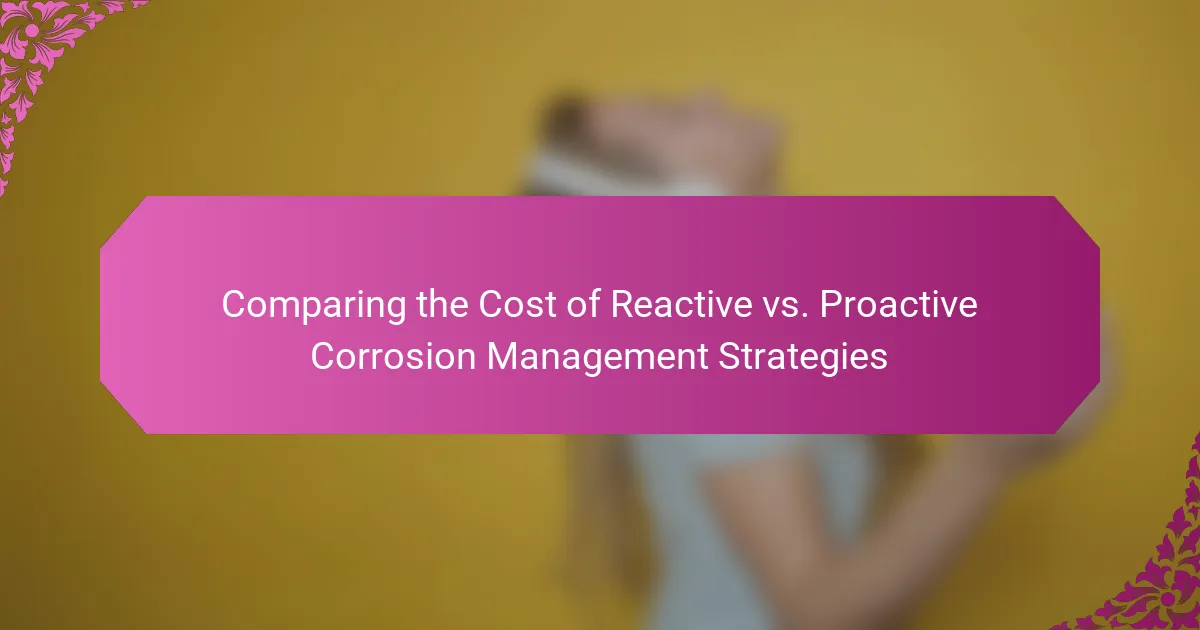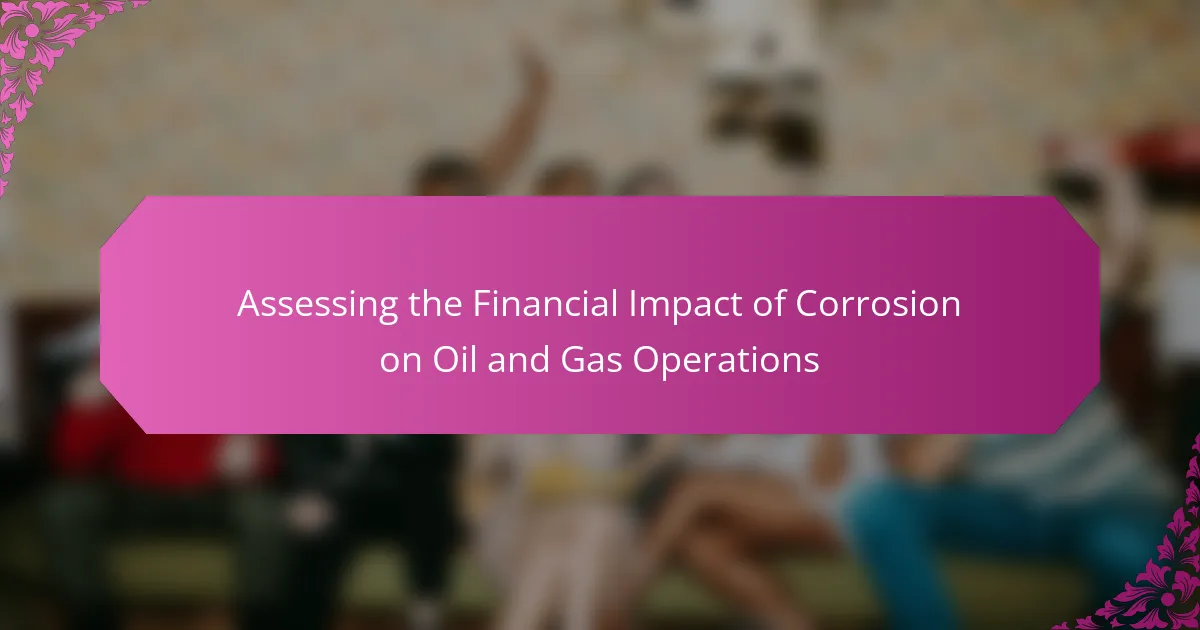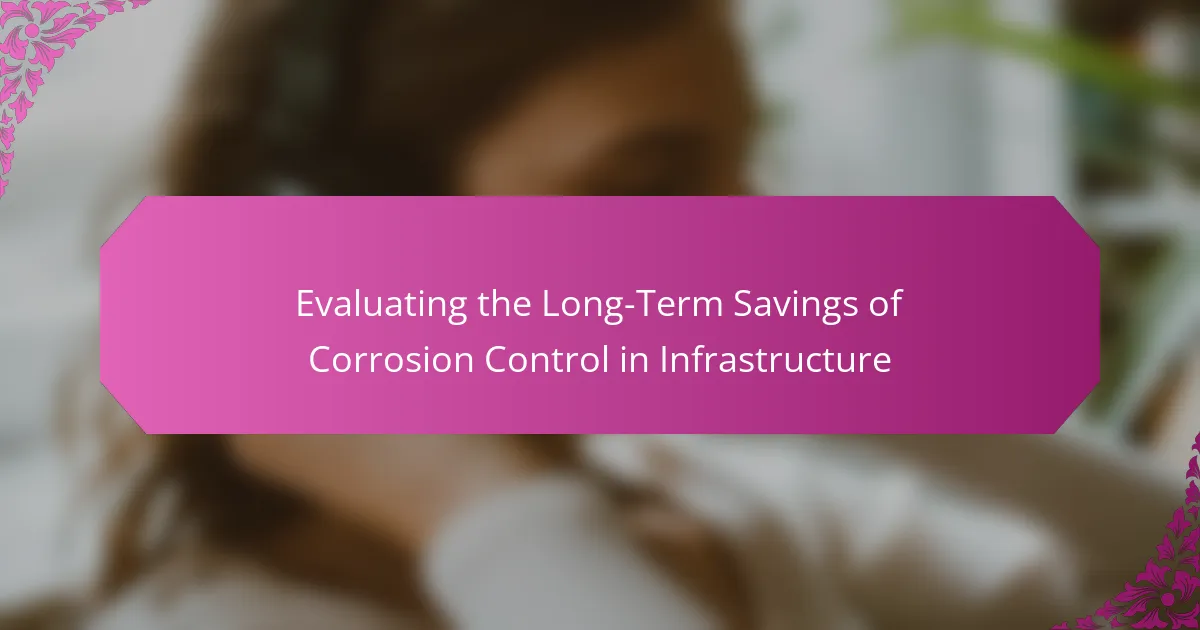Exploring budgeting strategies for corrosion management is essential for small businesses aiming to minimize long-term costs and enhance equipment longevity. By prioritizing proactive measures such as investing in corrosion-resistant materials and conducting regular inspections, businesses can effectively reduce unexpected expenses associated with corrosion damage. Leveraging technology for monitoring and data analysis further empowers small businesses to make informed decisions and allocate resources efficiently.

What are effective budgeting strategies for corrosion management in small businesses?
Effective budgeting strategies for corrosion management in small businesses focus on proactive measures to minimize long-term costs. By allocating resources wisely, businesses can prevent corrosion-related issues, ensuring equipment longevity and reducing unexpected expenses.
Preventive maintenance budgeting
Preventive maintenance budgeting involves setting aside funds specifically for regular inspections and maintenance tasks that prevent corrosion. This proactive approach can save businesses significant amounts in repair costs and downtime by addressing potential issues before they escalate.
Consider creating a maintenance schedule that outlines tasks such as cleaning, coating, and replacing corroded parts. Allocating around 10-15% of your total maintenance budget for corrosion-related activities is a practical starting point.
Material selection cost analysis
Material selection cost analysis is crucial for minimizing corrosion-related expenses. Choosing corrosion-resistant materials may have a higher upfront cost but can lead to lower maintenance and replacement costs over time.
Evaluate materials based on their lifespan, resistance to environmental factors, and compatibility with existing systems. For example, stainless steel may be more expensive than carbon steel but can offer significant savings in corrosive environments.
Employee training investments
Investing in employee training is essential for effective corrosion management. Well-trained staff can identify early signs of corrosion and implement proper maintenance techniques, reducing the risk of costly repairs.
Consider budgeting for workshops or certifications related to corrosion prevention and maintenance. Allocating a few hundred dollars per employee annually can yield substantial returns in terms of reduced corrosion-related issues and improved operational efficiency.
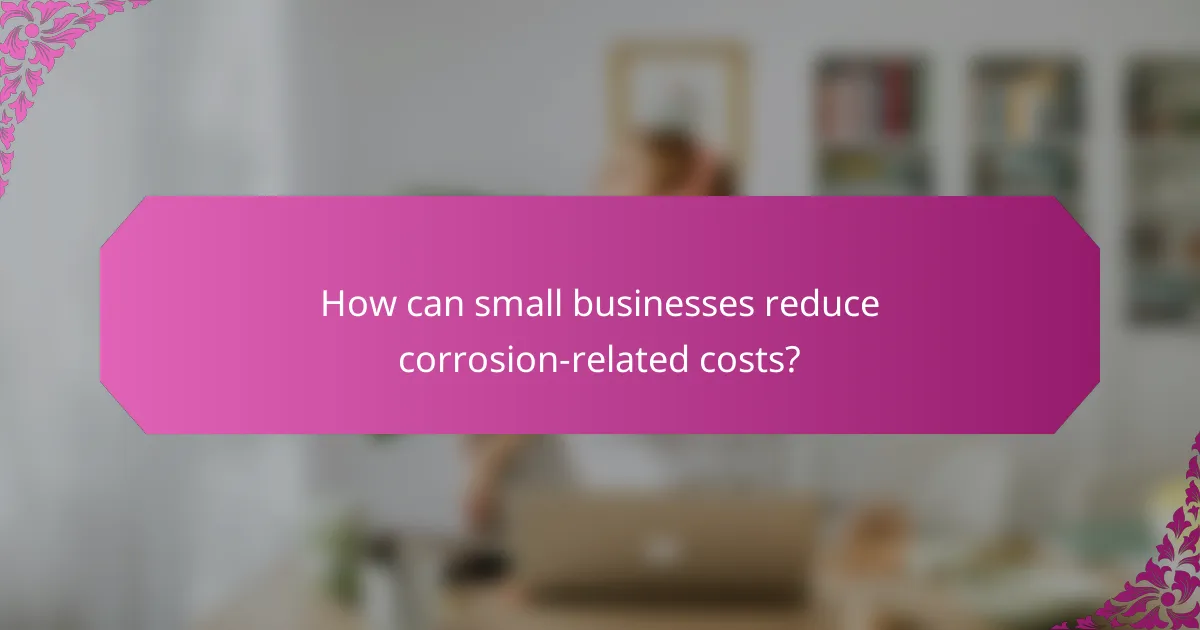
How can small businesses reduce corrosion-related costs?
Small businesses can reduce corrosion-related costs by implementing effective strategies that focus on prevention and maintenance. By investing in corrosion-resistant materials, conducting regular inspections, and utilizing protective coatings, businesses can significantly lower their long-term expenses associated with corrosion damage.
Implementing corrosion-resistant materials
Using corrosion-resistant materials is a proactive approach to minimize future repair costs. Materials such as stainless steel, aluminum, and certain plastics can withstand harsh environments better than traditional options. For example, switching to stainless steel for outdoor fixtures can reduce maintenance needs and extend the lifespan of equipment.
When selecting materials, consider the specific environmental conditions your business operates in. For instance, coastal areas may require more robust materials due to salt exposure. Investing in these materials may have higher upfront costs but can lead to substantial savings over time.
Regular inspections and audits
Conducting regular inspections and audits is crucial for identifying corrosion issues early. Schedule inspections at least biannually to assess equipment and infrastructure for signs of wear and tear. This proactive measure can help catch problems before they escalate into costly repairs.
During inspections, focus on high-risk areas such as pipes, tanks, and outdoor structures. Document findings and establish a maintenance schedule based on the condition of the materials. This organized approach can help prioritize repairs and allocate resources effectively.
Utilizing protective coatings
Protective coatings serve as a barrier against moisture and corrosive agents, significantly extending the life of metal surfaces. Applying coatings like epoxy or polyurethane can be a cost-effective solution for preventing corrosion. These coatings can be applied to various surfaces, including machinery, tanks, and structural components.
Ensure that the coating is suitable for the specific environment and follow manufacturer guidelines for application. Regularly inspect the integrity of the coatings and reapply as necessary to maintain protection. This strategy not only reduces corrosion but also minimizes downtime and maintenance costs.
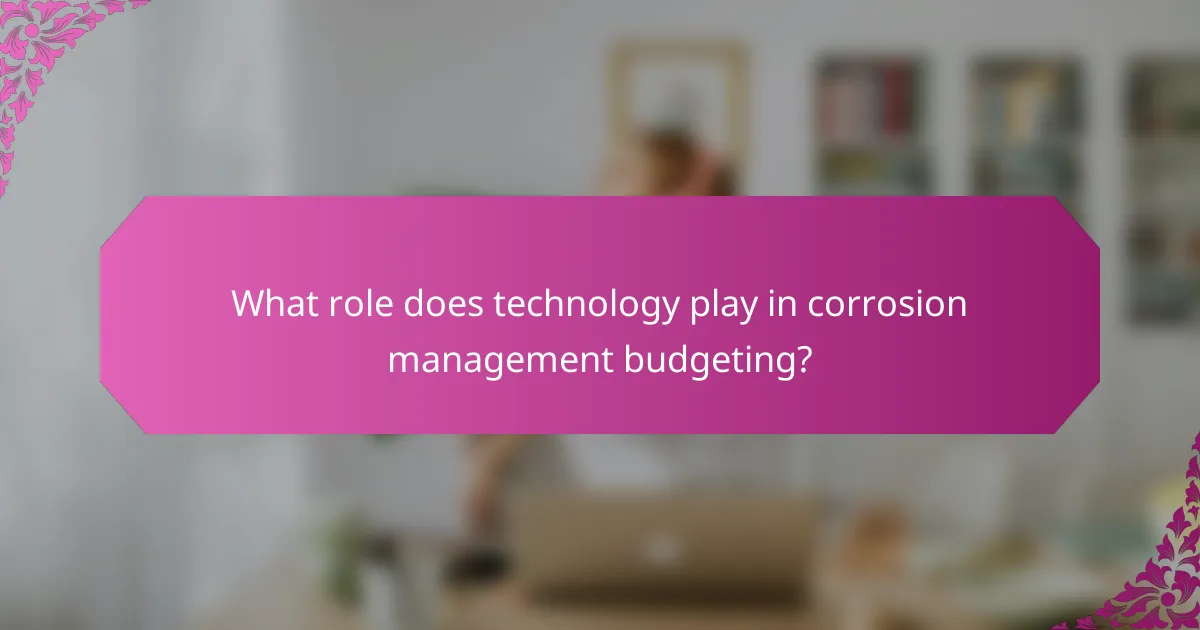
What role does technology play in corrosion management budgeting?
Technology significantly enhances budgeting for corrosion management by providing tools for monitoring, data collection, and analysis. These advancements help small businesses allocate resources more effectively, predict costs, and improve decision-making regarding corrosion prevention and mitigation strategies.
Corrosion monitoring systems
Corrosion monitoring systems are essential for tracking the condition of materials and structures over time. These systems utilize sensors and devices to detect corrosion rates, allowing businesses to identify potential issues before they escalate into costly repairs. For small businesses, investing in such technology can lead to significant savings by preventing unexpected failures.
Common types of corrosion monitoring systems include electrochemical sensors, ultrasonic thickness gauges, and visual inspection technologies. The choice of system often depends on the specific environment and materials used, with costs typically ranging from a few hundred to several thousand dollars depending on complexity and features.
Data analytics for cost forecasting
Data analytics plays a crucial role in forecasting corrosion management costs by analyzing historical data and identifying trends. By leveraging software tools, small businesses can predict future expenses related to maintenance, repairs, and replacements, which aids in creating a more accurate budget.
Implementing data analytics involves collecting data from various sources, such as monitoring systems and maintenance records. Businesses should focus on key performance indicators (KPIs) like corrosion rates and maintenance frequency to refine their forecasts. Regularly updating these analyses can help avoid budget overruns and ensure funds are allocated efficiently.
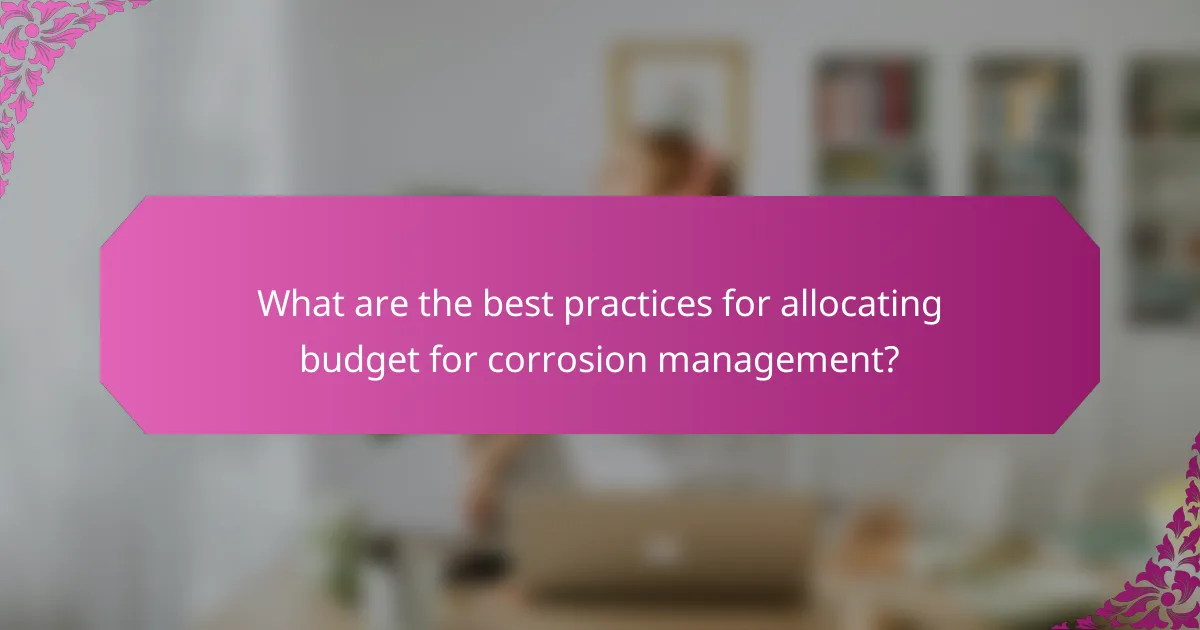
What are the best practices for allocating budget for corrosion management?
Effective budgeting for corrosion management involves identifying key areas of risk and establishing clear objectives. This ensures that resources are allocated efficiently to mitigate corrosion-related issues, ultimately protecting assets and reducing long-term costs.
Setting clear corrosion management goals
Establishing clear goals for corrosion management is essential for effective budgeting. These goals should be specific, measurable, achievable, relevant, and time-bound (SMART). For example, a small business might aim to reduce corrosion-related maintenance costs by a certain percentage within a year.
Regularly reviewing and adjusting these goals based on performance and changing conditions can help maintain focus and ensure that the budget aligns with the business’s overall strategy. Consider involving team members in this process to foster a sense of ownership and accountability.
Prioritizing high-risk areas
Identifying and prioritizing high-risk areas for corrosion is crucial for effective budget allocation. Conducting a thorough assessment of assets can help pinpoint locations where corrosion is most likely to occur, such as near water sources or in environments with high humidity.
Once high-risk areas are identified, allocate a larger portion of the budget to these locations for preventive measures, such as protective coatings or regular inspections. This targeted approach can significantly reduce the likelihood of costly repairs and downtime, ultimately saving money in the long run.

How can small businesses in the UK implement corrosion management budgets?
Small businesses in the UK can effectively implement corrosion management budgets by assessing their specific needs, understanding local regulations, and establishing partnerships with suppliers. This approach ensures that funds are allocated efficiently to mitigate corrosion risks while complying with industry standards.
Compliance with UK regulations
Understanding and complying with UK regulations is crucial for effective corrosion management budgeting. The Control of Substances Hazardous to Health (COSHH) and the Health and Safety at Work Act set guidelines that businesses must follow to ensure safety and environmental protection.
Small businesses should regularly review these regulations to stay updated on any changes. Investing in training for staff on compliance can help avoid costly fines and enhance overall safety practices.
Local supplier partnerships
Forming partnerships with local suppliers can significantly enhance corrosion management efforts. Local suppliers often provide materials and services tailored to the specific environmental conditions faced by businesses in the UK.
Additionally, collaborating with suppliers can lead to cost savings through bulk purchasing and access to expert advice on corrosion-resistant products. Small businesses should seek suppliers who offer warranties and support services to maximize their investment in corrosion management.
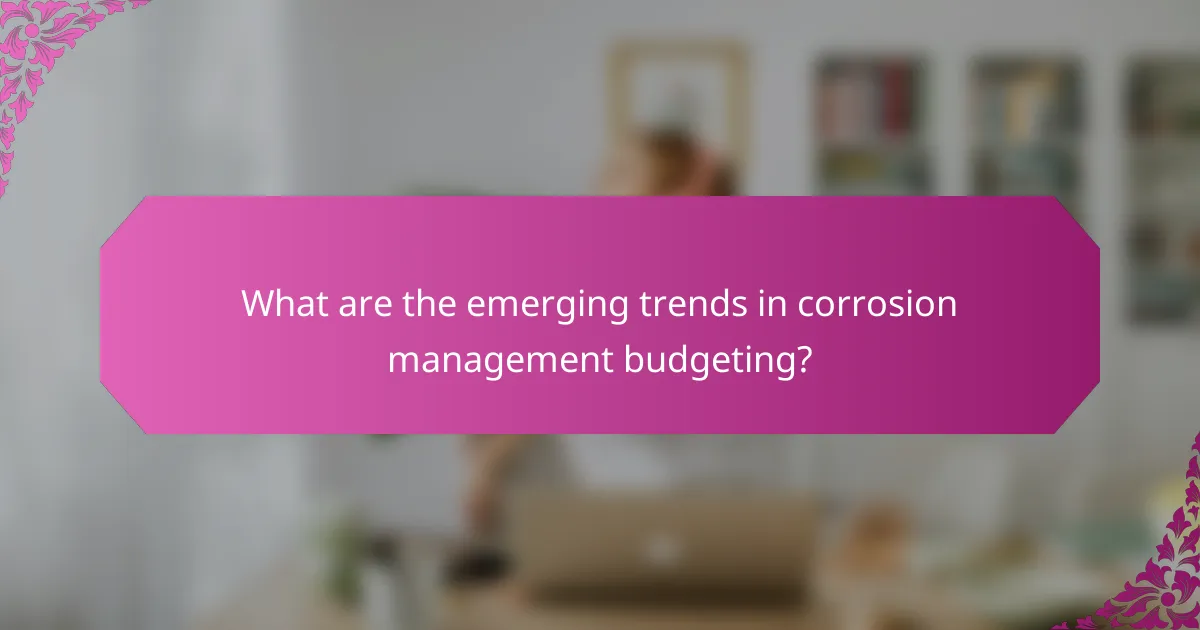
What are the emerging trends in corrosion management budgeting?
Emerging trends in corrosion management budgeting focus on integrating advanced technologies and sustainable practices to enhance cost-effectiveness. Small businesses are increasingly adopting innovative strategies to predict maintenance needs and reduce long-term expenses associated with corrosion.
Integration of AI in predictive maintenance
The integration of artificial intelligence (AI) in predictive maintenance allows businesses to anticipate corrosion issues before they escalate. By analyzing data from sensors and historical maintenance records, AI can identify patterns and predict when equipment is likely to fail, enabling timely interventions.
Small businesses can implement AI solutions that range from simple monitoring systems to complex predictive analytics platforms. This proactive approach not only minimizes downtime but also optimizes maintenance budgets by focusing resources where they are most needed.
Increased focus on sustainability practices
There is a growing emphasis on sustainability practices in corrosion management, driven by regulatory pressures and consumer demand for environmentally friendly operations. Small businesses are adopting materials and processes that reduce environmental impact while effectively managing corrosion.
Implementing sustainable practices can include using eco-friendly coatings, recycling materials, and investing in corrosion-resistant technologies. These strategies not only help in compliance with regulations but can also lead to cost savings in the long run, making them a smart investment for small businesses.
